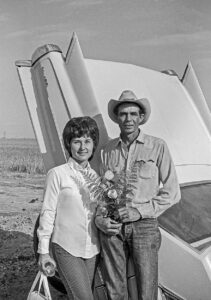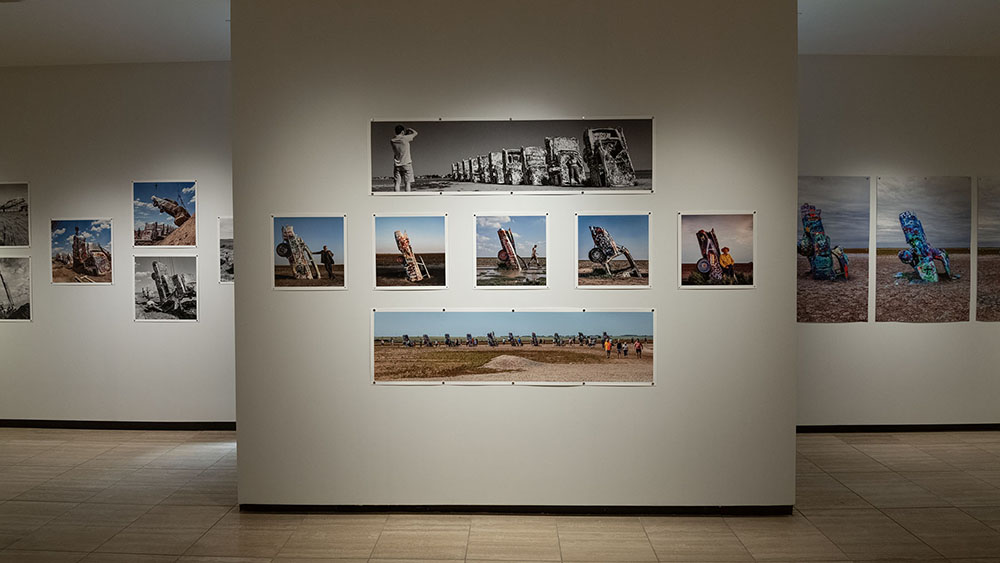The Cadillacs halfway buried off Interstate 40 just west of Amarillo look like they’ve always been there. From the highway, they resemble some geologic phenomenon – hints of an ancient structure barely exposed by plate tectonics.
But really, they’re 10 cars stuck upside down in the dirt, all standing at the same angle.
Cadillac Ranch, as the installation is known, was put together by a group of artists and architects called the Ant Farm in 1974. For 50 years, folks have stopped to check out or perhaps spray-paint the cars.
Wyatt McSpadden has photographed Cadillac Ranch from the very beginning. Now, his work is on display at the Amarillo Museum of Art’s exhibition “Cadillac Ranch at 50.” McSpadden spoke to the Texas Standard about why the ranch has had such staying power.
This transcript has been edited lightly for clarity:
Texas Standard: How many photos of Cadillac Ranch would you estimate you’ve published through the years?
Wyatt McSpadden: Oh, you know, not published, I think, but I’ve certainly taken thousands. You know, there hadn’t been a gigantic market for Cadillac Ranch pictures. There were several articles that ran in Texas Monthly that used some of my stuff. And Texas Highways almost did a piece with my work – I think they got cold feet; I don’t know exactly what happened.
But I have a long body of work. I started taking pictures there in June of 1974, which is when the cars were buried. And I wasn’t; a professional photographer at the time. I was actually working as a sort of hand at Stanley Marsh’s Toad Hall.
Stanley Marsh, who was the backer of the project.
Yes, Stanley Marsh 3 was the patron, or patrón, of the Ant Farm. He provided the money and the land for the Cadillac Ranch right off of Interstate 40.
And I was working there. I’d kind of fleshed out in my freshman year of college, and I was looking for something to do. I knew I didn’t want to go back into the family grocery store. And a second cousin of mine ran into me on the street one day and said, “well, Stanley’s hiring; go out there and talk to him.”
So I went out to Toad Hall, knocked on the door, Stanley said hello, and he said, “well, yeah, can you drive a lawnmower? Can you carry out the trash?” And so I was then officially a member of the Toad Hall gang.




















